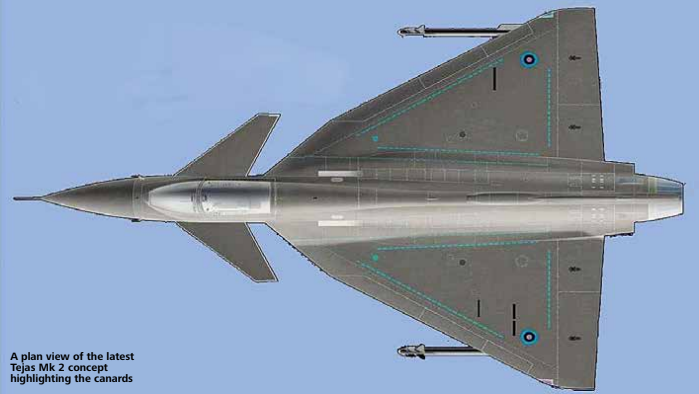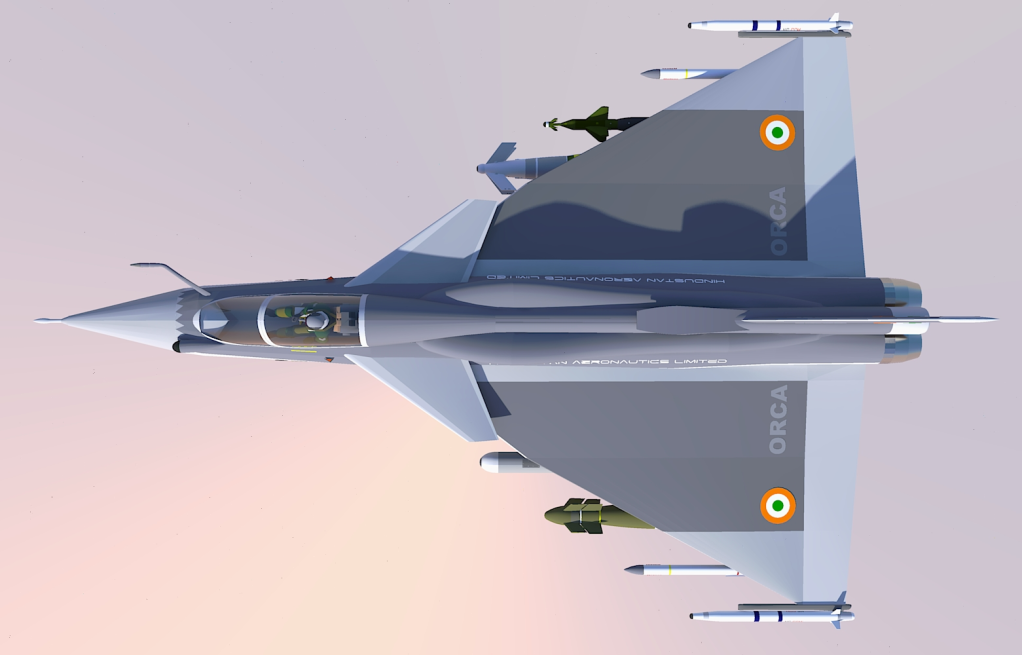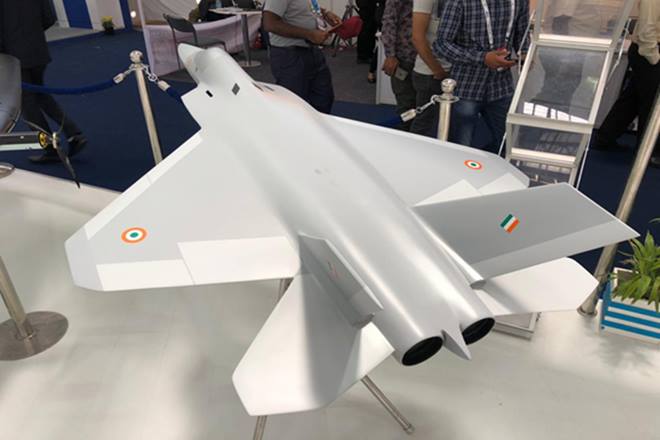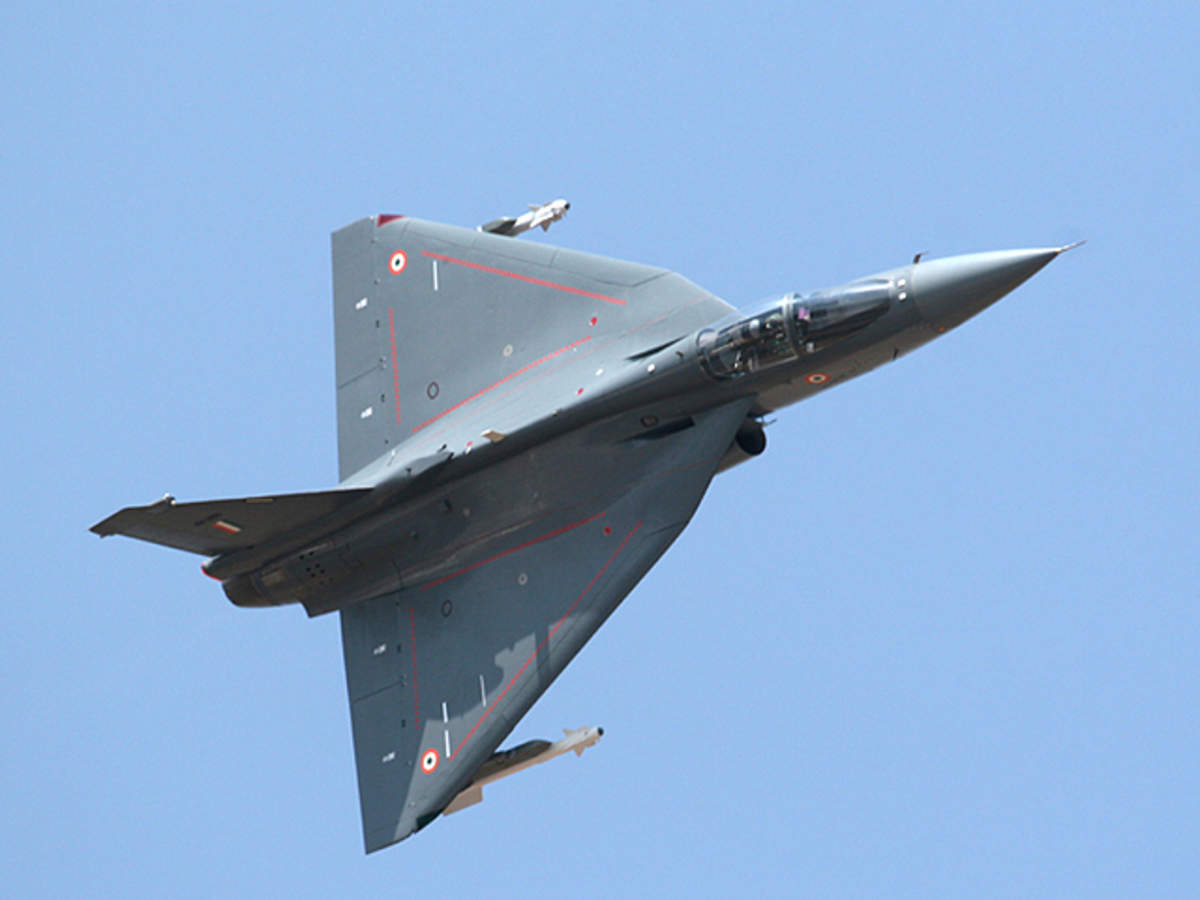The Balakot air strikes in February 2019 and the air combat thereafter in which a MiG 21 Bison of Indian Air Force (IAF) had to engage a much more modern F-16 of Pakistan Air Force (PAF) has once again brought IAF modernization back into focus. The then IAF Chief, Air Chief Marshal BS Dhanoa, has said in many forums that IAF has hit an all time low of 30 fighter squadrons vis-a-vis the government authorized 42. He has highlighted the convergence of strategic interests between China and Pakistan and their rapidly modernizing air forces. IAF on the other hand has been slowly losing the clear combat edge that it had enjoyed over Pakistan in 1971 both in terms quality and numbers. Aerospace is the domain of the future and the one who controls it will control the planet. It is clear that IAF must win the air war for the Army and Navy to win the surface war. Technology intensive air power requires faster replacement of assets due to quicker obsolescence. While IAF has a plan ‘B’ to fight with what it has, if forced into conflict, but numbers are clearly not adequate to fully execute an air campaign in a two-front scenario. It is incumbent upon the nation to provide IAF assets for the task it has been entrusted. It is imperative that IAF quickly rebuilt the squadron strength and acquire modern fighters that are as good or better than the adversaries. Developing indigenous aircraft is critical for India to become a global power. China has already moved way ahead. The Light Combat Aircraft (LCA) ‘Tejas’ and the Advanced Medium Combat Aircraft (AMCA) are the main two aircraft projects. It is important to continuously monitor their progress.
India’s Struggle in Fighter Aircraft Building
HF-24 ‘Marut’ was the first attempt by India to build a fighter aircraft. An excellent airframe design under the leadership of German designer Kurt Tank, but could not get a matching engine. Ironically many years later the LCA Mk 1 remains under-powered for its weight and operational specifications. Even the indigenous ‘Kaveri’ engine could not succeed, and India is being forced to seek foreign help to retrieve it. India also needs help in airborne radars, and areas of stealth, electronic warfare (EW) systems etc. For India to remain a significant player in aircraft manufacture, LCA has to succeed and it must establish the framework for the leap ahead to AMCA.
4th and 5th Generation Fighters
The LCA ‘Tejas’ was envisaged to be a 4th generation fighter and the AMCA is meant to be a 5th generation fighter. 4th generation fighters are mostly multirole; use ‘Energy-Maneuverability’ concept for performing ‘fast transients’ – quick changes in speed, altitude, and direction – as opposed to just high speed; lightweight aircraft with higher thrust-weight ratio, and use digital Fly-By-Wire (FBW) flight controls which allow relaxed static stability flight and in turn agility. They have electronically managed power-plants. Pulse-Doppler fire-control-radars give look-down/shoot-down capability. Head-up displays (HUD), hands-on-throttle-and-stick (HOTAS) controls, and multi-function displays (MFD) allow better situational awareness and quicker reactions. Composite materials help reduce aircraft weight. Improved maintenance design and procedures reduce aircraft turnaround time between missions and generated more sorties. The F-16, F-18, MiG-29, SU-30 MKI and Mirage-2000 are all in this category. A sub generation called the 4.5th generation fighters evolved in the last decade, which saw advanced digital avionics, newer aerospace materials, modest signature reduction, and highly integrated systems and weapons. These fighters operated in network-centric environment. Key technologies introduced include multifunction active electronically scanned array (AESA) radars; longer range BVR AAMs; GPS-guided weapons, solid-state phased-array radars, helmet-mounted sights (HMDS), and improved secure, jamming-resistant data-links. A degree of super-cruise ability (supersonic without afterburner) was introduced. Stealth characteristics focused on front-aspect radar cross section (RCS) reduction through limited shaping techniques. Eurofighter Typhoon, Dassault Rafale and Saab JAS 39 Gripen were in this category. Many 4th generation aircraft were also upgraded with new technologies. Su-30MKI and Su-35 featured thrust vectoring engine nozzles to enhance maneuvering.
The fifth generation was ushered in by the Lockheed Martin/Boeing F-22 Raptor in late 2005. These aircraft are designed from the start to operate in a network-centric combat environment, and to feature extremely low, all-aspect, multi-spectral signatures employing advanced materials and shaping techniques. AESA radars are with high-bandwidth low-probability of intercept. IRST and other sensors are fused in for Situational Awareness and to constantly track all targets of interest around the aircraft 360 degree bubble. Advanced avionics and glass cockpit, and improved secure, jamming-resistant data-links are other features. Avionics suites rely on extensive use of very high-speed integrated circuit (VHSIC) technology and high-speed data buses. Fifth-generation fighters target “first-look, first-shot, first-kill capability”. In addition to high resistance to ECM, they can function as a ‘mini-AWACS’. Integrated electronic warfare system, integrated communications, navigation, and identification (CNI), centralized “vehicle health monitoring”, fibre-optic data-transmission, and stealth are important features. Maneuver performance is enhanced by thrust-vectoring, which also helps reduce takeoff and landing distances. Super-cruise is inbuilt. To maintain low signature primary weapons are carried in internal weapon bays. The current fifth-generation fighter projects include Lockheed Martin F-35 Lightning II, Russia‘s Sukhoi PAK FA (SU-57), China’s Chengdu J-20 and Shenyang J-31, and India’s AMCA. Japan is also exploring technical feasibility to produce fifth-generation fighters.
IAF’s Fighter Inductions and Upgrades
The first Tejas IAF unit, No. 45 Squadron Flying Daggers was formed on 1 July 2016 with just two aircraft at Bangalore. Later it relocated to its home base at Sulur, Tamil Nadu. HAL has reportedly completed delivered the 20 LCA Mk1 ordered in the Initial Operation Clearance status (IOC), but it took nearly four years for the same. 36 Dassault Rafale will start inducting in later part of 2020 and full complement of aircraft to be delivered by 2022. IAF’s MiG 29, Mirage 2000 and Jaguar fleets are undergoing avionics and weapons upgrade to make them closer to 4-plus generation. The process is on and should complete by 2021. IAF will upgrade 40 Su-30 MKI with new AESA radar, onboard computers, a new electronic warfare suite, and ability to carry BrahMos cruise missile. It may also integrate the nuclear capable Nirbhay missile. Desperately short of fighters, the IAF is considering buying additional 21 MiG 29 aircraft from Russia. The airframes are ready and Russia has promised to deliver all 21 upgraded fighters within 18 months. IAF has initiated the process of inducting 114 new medium multirole fighters. Response to Request For Information (RFI) has already been received, and it is hoped that the already delayed Request for Proposal (RFP) will hopefully be issued sometime in 2020.
The Struggling LCA Mk1 Aircraft
The “Long Term Re-Equipment Plan 1981” noted that the MiG-21s would be approaching the end of their service lives by the mid-1990s, and that by 1995, the IAF will require replacements. The LCA was to fill this requirement. The IAF’s Air Staff Qualification Requirement (ASQR) for the LCA were finalized in October 1985.
LCA Tejas is a multirole fighter designed by Aeronautical Development Agency (ADA) and produced by Hindustan Aeronautics Limited (HAL) and first flew in January 2001. Tejas has a tail-less compound delta-wing configuration with a single dorsal fin. It has FBW controls and integrates relaxed stability, multi-mode radar, digital avionics system, composite material structures, and a flat rated engine. It is supposedly the smallest and lightest in its class of contemporary supersonic combat aircraft.
A close look at the biggest aviation indigenous project unfortunately shows that a lot more needs to be done. 20 LCA Mk1 fighters are ordered in Initial Operational Clearance (IOC) status, and 20 LCA Mk1 in Final Operational Clearance (FOC) status. All IOC aircraft have been delivered to IAF. The production go ahead has been given for the FOC aircraft. Authorities handed over the FOC certificate and the release-to-service document (RSD) to the CAS, Air Chief Marshal BS Dhanoa at the 2019 Aero India in Bengaluru. HAL has already received the FOC standard aircraft drawings to commence production. The FOC requirements are integration of Derby and Python BVR missiles, and the GSh-23 gun; have air-to-air refueling capability; the angle of attack increase from 24 to 28 degrees; the braking system enhancement; and the existing nose cone radome made of composites to be replaced by a quartz model so as to increase the current radar range of 45–50 km to more than 80 km. The Cobham Quartz radome with higher permittivity increases the detection range of the multi-mode radar, tests have reportedly shown promising results. In order to expand the flight envelope to meet service requirements, the program reportedly took assistance from EADS. The FOC status actions were initiated in December 2013, even though Tejas received its final IOC clearance in January 2015. Meanwhile, in December 2016, the Indian Navy announced that the LCA was overweight for carrier operations and would look for other alternatives. They could best induct a few for shore based use. Yet ADA-HAL continued to develop the Naval LCA. The arrestor hook landing was first demonstrated on a shore-based runway. Later Naval LCA made a successful arrested landing on aircraft carrier INS Vikramaditya in January 2020.

New capabilities include beyond visual range missile capabilities, air-to-air refueling, air-to-ground FOC-earmarked weapons and general flight envelope expansion. Some weapon configurations are yet to be cleared, and the airframe fatigue test was alst still underway. There are a total of 10 concessions reportedly been granted for Mk1 FOC. Meanwhile HAL has been asked to ramp up production capacity from current 8 to 16 a year. LCA (FOC) did its acceptance flights in February 2020. MoD had set a target of 16 per year by 2020. As per HAL Chairman R Madhavan around 12-14 are expected in the 2020-21 financial year. In July 2018, Minister of State for Defence, Subhash Bhamre told the parliament that the indigenous content of the Tejas is 59.7% by value and 75.5% by number of line replaceable units. it is hoped that these figures will come down in due course.
LCA Mk 1A
In a report of May 2015, the LCA Mk 1 was criticized by the Comptroller and Auditor General of India (CAG) for not meeting many of IAF’s critical requirements. In view of delays, in October 2015 itself, IAF gave a go ahead for an interim version called the LCA Mk 1A. IAF needs 83 LCA Mk1A. LCA Mk1A aircraft will have a few advanced features which include AESA radar, additional electronic warfare suite, special data link packages, self protection jammer, satellite navigation systems, improved flight controls, changes in electrical and electronics system among others to increase the operational capability. The interim variant would have the improved version of the Israeli EL/M-2052 AESA radar, and an electro-optic Electronic Warfare (EW) Suite developed by IAI subsidiary ELTA. It will also incorporate weight reduction along with easier servicing and maintainability, and have a mid-air refueling probe. Mk 1A was planned to start inducting in 2020, but HAL had sought additional funds and time for its D&D. The first flight is now been planned only in 2021-22 but to compensate for loss of time, HAL plans to use its underutilized Nashik facility to further augment its production capacity. Ideally IAF should have started getting Mk1A the moment LCA Mk1 production gets completed by 2021 but at the current development rate, LCA Mk 1A may enter service by 2023. Would that mean forcing more LCA Mk1 on IAF?
In 2017, the IAF had issued a request for proposal (RFP) stipulating that the Tejas Mark 1A must have the Meteor and ASRAAM. Meteor missile with 150-180 km range is coming with Rafale. MBDA currently has a condition that the Meteor missile could be integrated only with European or Indian AESA radars. this complication would have to be resolved. The Mk 1A will one day have an indigenous AESA Radar jointly developed by BEL and Israel’s ELTA. The Design and Development begun some time back. MoD sanctioned the purchase of 83 new Tejas Mark 1A fighters for Rs 330 billion (US$ 4.7 billion), implying Rs 400 crore per aircraft. Separate negotiation for the support package brought the total cost of the deal to ₹45,000 Crore (US$6.3 billion).The first Tejas Mark 1A is expected to be delivered before 2023, 36 months after signing the contract.
LCA Mk II
IAF has committed for 200 LCA Mk II aircraft, taking the total requirement of LCA to over 300. LCA Mk II was originally planned to retain basic aircraft shape and incorporate the larger and more powerful 98 kN thrust GE F414 engine, which was more likely to meet the LCA originally agreed specifications. This would have meant significant change to the air inlets and also the aircraft dimensions and weight would have to increase. At the Aero India 2019, ADA unveiled a new model of the Tejas’s Mk II, and called it a Medium Weight Fighter (MWF). This aircraft was expected to fit into IAF’s requirement for the Medium Multi-Role Combat Aircraft (MMRCA). This enhanced version of LCA, the Tejas Mk-2 MWF would be 14.6m long with a wingspan of 8.5m (compared with 13 m and 8.2 m respectively for the LCA and 14.36m and 9.13m for Mirage 2000). The aircraft will have a compound delta wing with close-coupled canards. This would reduce drag in all angles of attack it was announced. The longer fuselage will allow for more fuel behind the cockpit. The Mk II would carry much more internal and external fuel. The maximum weight of the aircraft would be 17.5 tonnes (compared to Mk 1’s 13.5 tonnes). Its external stores carrying capacity will increase from 5.3 to 6.5 tonnes. It will be equipped with a higher thrust General Electric GE-F414-INS6 engine that features a Full Authority Digital Electronics Control (FADEC) system.
Tejas Mark II will also feature an indigenous integrated life support system-onboard oxygen generation system (ILSS-OBOGS) weighing 14.5 kg, a built-in integrated electro-optic electronic-warfare suite among other improvements to avionics. It will have an infra-red search and track (IRST) system and a missile approach warning system (MAWS) and a modern AESA radar. An increase in payload capacity to 6,500 kg (14,300 lb) and increased number of weapons stations from 7 to 11, will allow the MWF to carry more weapons. It is said to be designed for swing role, with BVR and close-combat capability, and precision strike. Beyond the LCA program, the AMCA, India’s fifth-generation fighter, can only move forward once the LCA Mk II design is frozen. The realistic first flight time-line would be 2028. The aircraft may induct around 2034-35. In any case HAL will require at least 7-8 years to deliver the 123 Mk1 and Mk 1A aircraft.

Tejas LCA Vs JF-17
Comparisons are being drawn between the JF-17 and India’s LCA. The Tejas uses many new technologies including large amounts of composite materials, advanced avionics and a unique aerodynamic configuration, and has a good potential to be expanded into variants. Some call JF-17 the aircraft of today and the Tejas the aircraft of tomorrow. The JF-17 Block II costs close to US$ 25 million, vis-a-vis the LCA Mk 1 around US$ 28 million.
LCA Tejas has been manufactured by a single country, and is claimed to be the world’s lightest supersonic fighter. Currently only one squadron with 16 aircraft has been formed. Aircraft production is still floundering at below 8 a year, and is planned to be ramped up to 16 a year. The more comparable LCA Mk 1A will have its first flight only in 2021 and induct earliest by 2023. Indian government has recently cleared 83 LCA MK1A.
The JF-17 is joint project between China and Pakistan. Nearly 120 are already flying. The aircraft production at nearly 25 aircraft a year is high. The Block III will induct in 2020. There are already two foreign customers flying the JF-17. JF-17 has been in service for last ten years and serves in six squadrons at full operational capability, whereas the Tejas has only one squadron after four years. LCA and JF-17 are competing for the Malaysian contract. The two contenders have ‘fairly similar’ performance. JF-17’s Russian engine has maintenance and serviceability issues well known to Malaysia from their MiG-29 experience. LCA’s General Electric F404 engine is much more reliable.
Twin Engine Deck Based Fighter (TEDBF)
The Indian Navy eventually issued an RFI for 57 naval multirole fighters. However, despite rejecting the Tejas initially for being overweight, the Navy restarted testing with the NP-2 (Naval Prototype 2) in August 2018, with the first mid-air refueling being held in September 2018. The experience gained in operating the Naval Prototype will help in proving input to the development of Twin Engine Deck Based Fighter (TEDBF) aircraft. The TEDBF will be powered by two General Electric F414 and will carry higher and heavier payloads and range.
Omni-Role Combat Aircraft (ORCA)
A few images of India’s future Twin-engine Medium Class Omni-Role Combat Aircraft (ORCA) fighter are being circulated on social media. Some of the visible features are the canards, diverterless supersonic inlet, conformal wing root tanks/containers, larger number of hard-points, and option for folding wingtips. It will weigh around 23 tons. An ambitious timeline of first flight in 2026 and production start in 2030 are being spoken of.

DRDO-HAL AMCA
The AMCA is a fifth generation aircraft being designed by ADA and will be manufactured by HAL. It will be a twin-engine, all weather multirole fighter. It will combine super-cruise, stealth, advanced AESA radar, super maneuverability and advanced avionics. It is meant to replace the Jaguar and Mirage 2000 aircraft and complement the SU-30 MKI, Rafale and Tejas in the IAF and MiG 29K in the Navy. On 4, April 2018 then Defence Minister Nirmala Sitharaman told the parliament that the feasibility study of the programme had already been completed and the program has already been given go ahead by the IAF to initiate AMCA Technology Demonstration phase before launching full Scale engineering development phase.
Earlier, in October 2008, IAF had asked ADA to prepare a detailed project report for a next generation medium combat aircraft. In April 2010, IAF issued the ASQR for the AMCA, which placed the aircraft in the 25-ton class. The first flight test of the prototype aircraft was originally scheduled to take place by 2017. DRDO proposed to power the aircraft with two GTX Kaveri engines. In October 2010, the government released Rs 100 crore to prepare feasibility studies. Meanwhile in November 2010 itself ADA sought Rs 9,000 crore to fund the development which would include two technology demonstrators and seven prototypes. ADA unveiled a 1:8 scale model at Aero India 2013. The AMCA design will have shoulder-mounted diamond-shaped trapezoidal wings, and an all-moving Canard-Vertical V-tail with large fuselage mounted tail-wing. It will be equipped with a quadruple digital fly-by-optics control system using fibre optic cables. The reduced radar cross-section (RCS) would be through airframe and engine inlet shaping and use of radar-absorbent materials (RAM). AMCA will have an internal weapons bay, but a non-stealthy version with external pylons is also planned.
Low-speed and supersonic wind tunnel testing and Radar Cross Section (RCS) testing was reportedly completed by 2014, and project definition phase by February 2014. The Engineering Technology & Manufacturing Development (ETMD) phase was started in January 2014 after HAL Tejas attained IOC, and it was announced that the AMCA will have first flight by 2018. At Aero India 2015, ADA confirmed that work on major technological issues, thrust vectoring, super-cruising engine, AESA radar and stealth technology was going full swing. Russia was to support for the development of Three-Dimensional Thrust Vectoring (TDTVC), AESA Radar and stealth technology. Saab, Boeing and Lockheed Martin also offered to help in key technologies. AMCA will initially fly with two GE-414 engines. Eventually it is planned to be powered by two GTRE, 90 kN thrust, K 9 or K10 engines which are successor to the troubled Kaveri engine. France has offered full access to the Snecma M88 engine and other key technologies, and United States offered full collaboration in the engine development with access to the GE F-414 and F-135.

AMCA CCS Clearance
Two technology demonstrators and four prototype were scheduled to go under various type of testing, and analysis in 2019. Ground reality is that they are far from it. As of late 2019, defence ministry was seeking approval from Cabinet Committee on Security (CCS) to go ahead with the Prototype Development Phase. AMCA is intended to be a test case for fundamental Indian research in the unfamiliar field of cutting edge aviation, and yet is poised to be anything but it says defence analyst Shiv Aroor of Live Fist. DRDO’s Aeronautical Development Agency (ADA), had earlier announced the targeted first flight of AMCA by 2020, and production by 2025 has now revised first flight to 2025.
AMCA Navy
The Indian Navy first got ‘involved’ in the AMCA project in March 2013 when it formally asked the DRDO/ADA if they were planning a naval version of the program. They were looking at it in relation to the indigenous aircraft carriers IAC-2. Navy have already sought 57 aircraft of MMRCA2 class. Naval AMCA (NAMCA) timeframes will match IAC-2 they feel. Navy’s requirements were sent to DRDO on 7 September 2015. They have suggested a separate team for NAMCA development.
AMCA Foreign Support
Unsure of indigenous capability, India has informed the foreign vendors of MMRCA 2 program that India’s quest for fighters would need commitments towards the AMCA. In anticipation, most vendors have set up joint ventures with Indian defence majors and set up research and manufacturing facilities. IAF is ‘fully supporting’ the project, but hopes the timelines stated are realistic, because otherwise it upsets its procurement cycles. In any case IAF’s 114 Make-in-India fighters will partly act as cushion for delays. Meanwhile DRDO has been discussing with Indian defence companies including Tata, Mahindra Defence, Larsen & Toubro and many smaller specialised firms for work share for AMCA. Part of private Indian industry is already does major fabrication work for defence majors like Lockheed Martin, Boeing, Airbus, BAE Systems and others. Flight Global’s Stephen Trimble says “AMCA is clearly India’s best option for preserving sovereignty and flexibility over the long-term, but it is the highest risk”. Technologically, the AMCA is a project that runs concurrent to India’s Ghatak stealth unmanned combat aircraft. Many laboratories are researching common technologies for both platforms, including shape, stealth, network-centricity, sensors and materials.
Way Ahead
LCA and AMCA are flag ship programs of Indian defence manufacturing. The aviation technologies are much more complex and expensive than building ships and tanks. The fact that India is still struggling to get FOC aircraft production for the base LCA model indicates that there is need for external help. The variables and anxieties will continue to hit the AMCA. Joint ventures or technology transfers are essential for the engine, AESA and EW systems. Also we will require help to handle complex aerodynamic configuration and stealth of the AMCA. Considering the slow progress in LCA program, it is going to be an uphill task. Hush-Kit’s Joe Coles says “A first flight in 2025 (if achieved) plus ten or twenty years of development to get it operational sees it reaching squadrons in the 2035-45 period. At best, you have an F-35 twenty years too late”. The indigenous fifth generation fighter would require more concerted energies and professional administrative attention. During technological hold-ups, there is a need to accept reality and raise the hands, then carrying on ‘hit and trial’. Best to invite help lest we end up in serious delays and cost overruns. Time act is now.
This Article was earlier published in Indian Defence Review and since then considerably updated
LCA Tejas. Picture Credit: Economic Times


22 thoughts on “AMCA and LCA Mk II – Challenges and Options”